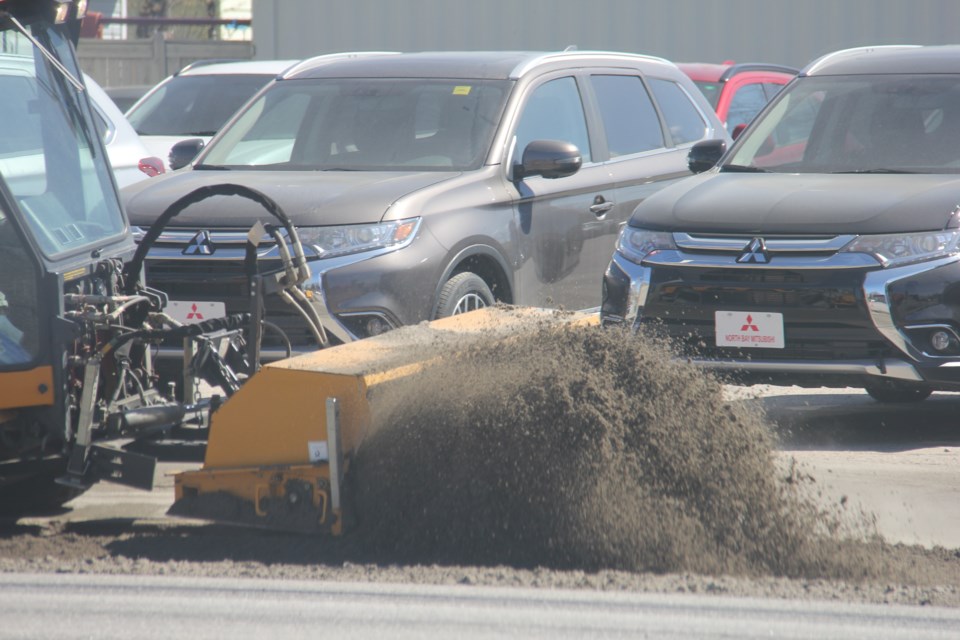You might not have given a second thought as you drive by those orange traffic cones, street sweepers and trucks hauling away a winter's worth of sand, but they're actually giving the dirt a second life.
It starts with the sidewalks and boulevards.
"On the main arteries, wherever we can, we try to push the sand off into the curb, then do a bulk pickup with our crews using a backhoe and trucks," explains Roads Supervisor Victor Anello, "You can get a foot of buildup there."
The sand, now contaminated by an abundance of salt, oil, animal feces and bits of metal and plastic is then trucked to the Merrick Landfill site just north of the city where it is used as a top dressing to cover the garbage.
"Sweepings must be brought to the Merrick Landfill to be used to cover over the dumped garbage. At this point, we have hauled over 3,000 tonnes to Merrick and expect to haul approximately four to five thousand tonnes more before we are complete. For this, the city hires tri-axle trucks to do the hauling due to the long and heavy haul."
Anello says the city puts about 16,000 tonnes of sand on roads and sidewalks over the winter.
One of the reasons the cleanup is done as soon as possible is to keep the sand from entering the storm sewers.
"We try to pick up as much as we can, especially on hills, unfortunately, some does get in but there's not much we can do about that. We try to pick up as much as we can."
The city has 800 lane km of roads that are cleaned and 150 km of sidewalks and boulevards to do every spring.
It schedules one week of midnights to sweep around parking metered sections and areas that have parking during the days.
A contractor uses four sweepers to work nights on main arteries for five to six weeks to pick up sweepings along curbs and centerlines preparing for the city's street painting program which usually starts late May.
Once main streets are done, contractors are sent into subdivisions during the days, and this can take up to two months depending on the weather. There is also a sweeper that does maintenance throughout the rest of the summer and fall.
And those big brushes on the sweepers need to be replaced every 24 hours of use time.
One concern Anello has is people sweeping off their own driveways and lawns and creating mounds on city allowances.
"It can cause serious road hazards. If you have a pile of dirt at the edge of the road it can cause serious obstacles for bicycles. One thing we are working on is some sort of schedule to allow people to know when we'll be in their area.
"That's why communication will be important going forward because people like to sweep their lawns to get the sand off, so if they knew a schedule, it would help. But we can't be everywhere at once and that's something we're looking at is a better scheduling system to let people know when we are going to be in their area and give them the opportunity to sweep the sand off their lawn, but they cannot create hazards.
"For main arteries, it's very difficult to do that because it's weather dependent, but when we get into the subdivisions we are looking at getting a schedule up so people know when we are going to be in their area."



